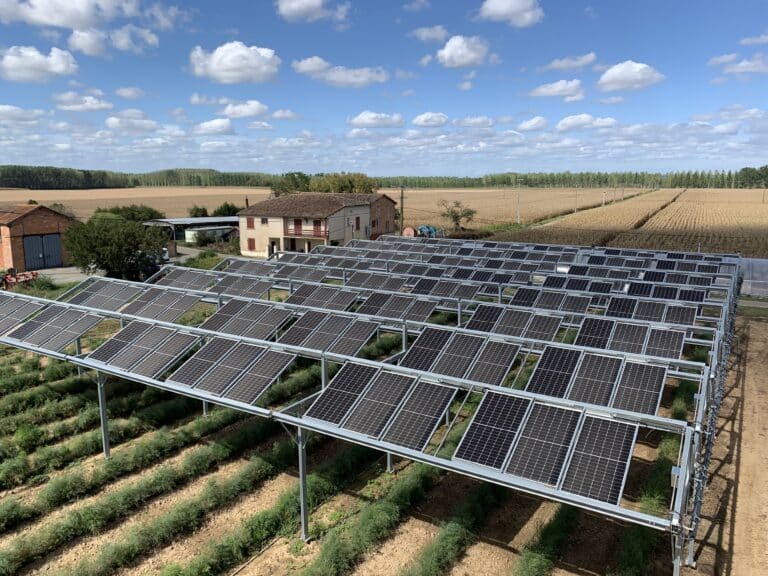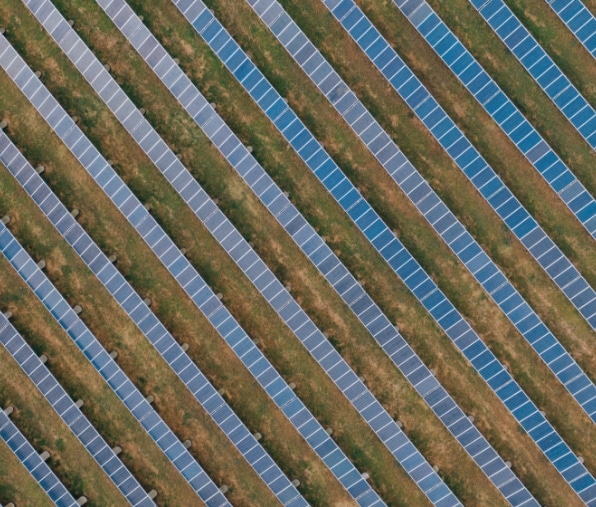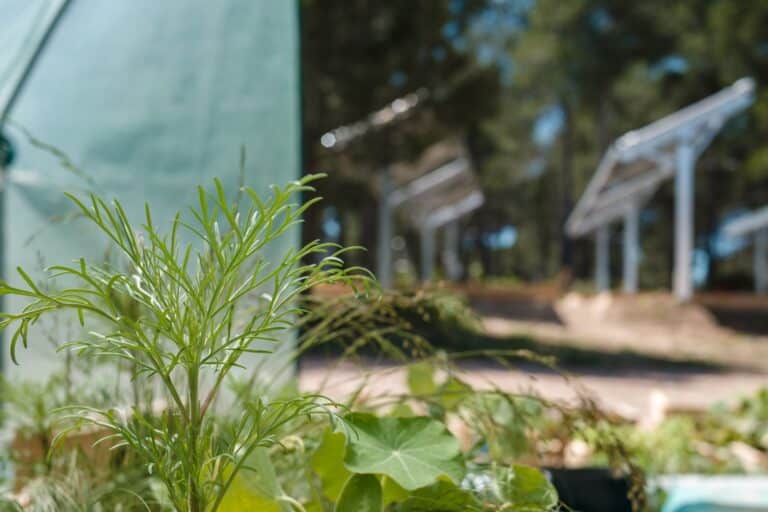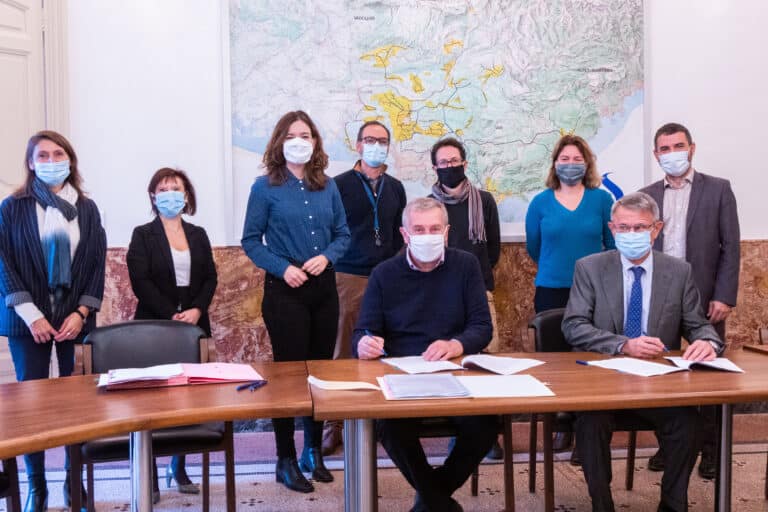In the same way ascattle farms, sheep farms are affected by new are affected by new issues linked to climate change climate change. Animals are increasingly exposed to high temperatures, stressful climatic conditions directly impacting their well-being, their environment, and and, more generally the farm. In this article, we take a look at the stresses affecting your animals, theeffect effect has on production and operations, as well as the solutions that an agrivoltaic system.
What is heat stress and what impact does it have on farms sheep ?
Sheep (lambs, ewes, rams, etc.) are subject to new climatic conditions, particularly during the summer months. This is when we talk about increased heat stress: the inability of an animal to maintain its thermoregulatory capacities.
The comfort temperature range is between -8°C and 23°C for ewes, and between -5°C and 30°C for lambs (Gers Chamber of Agriculture, 2021). These values vary according to other climatic parameters: humidity, wind speed and solar radiation. Together, these parameters determine the temperature felt by the animal, which helps define thermal comfort zones.

Certain factors intrinsic to the animal (breed, age or diet) also influence sensitivity to climatic stress. For example, the woolly fleece of breeds such as Merino acts as a shield, attenuating thermal stress. Prolonged or repeated exposure to heat stress has an impact on sheep behavior, health, production capacity and reproduction..
The various impacts on sheep farms
Impact on sheep health, behavior and reproduction
Heat stress induces a real risk to the health and survival of sheep: it generates a higher mortality rate by reducing the effectiveness of the immune system (Rojas-Downing et al., 2017). It has been shown that temperatures above 38°C, without available shade, can be lethal for young lambs. What's more, lambs with the thinnest fleece are the first to die, due to a deficit in body insulation.
On the other hand, a change in the animal's behavior or condition can be observed. When the ambient temperature rises, sheep look for a cooler area on the ground to lie down, and consume more water per unit of dry matter ingested. Kaushish shows that water consumption rises from 9 to 11% of total weight in winter to 19 to 25% in summer in a 3-year-old sheep.
Finally, heat stress also affects sexual behavior, directly resulting in a lower conception rate. For example, ewes bred under thermoneutral conditions are 2.4 times more likely to be pregnant than ewes subjected to heat stress (Romo-Barron et al.).
Impact on milk and meat production
Global warming has an impact ones productions production production of sheep farms. As far as milk production is concerned, this appears to be influenced by thermal comfort. thermal comfort, and could fall by up to 30% when maximum temperatures exceed 21-24°C. Milk quality is also penalized, with lower protein and fat content. With regard to productione, an increase in temperatures would influence weight gain, notably by limiting feed intake.
L'impact on thefarm business
All the above-mentioned impacts havedirect repercussions on the activity and sustainability ofa farm as a whole: whether in terms of quantity and quality of final output, meat, milk or cheese.Sheep farmers thereforeneed tofind solutions to deal with them.
To limit these risks, as in the case of cattle farms, certain avoidance measures are already implemented.
In mountainous areas, estivation, i.e. the raising of animals to higher altitudes, is a highly effective means of adapting to hot temperatures: a drop in temperature of around 6°C is obtained for an elevation of 1000m. In other areas, animals can be housed in buildings sheltered from high temperatures.
Cowever, chis reorganization necessarily entails the purchase of concentrated feed, or the anticipated use of forage stock, and impacts on annual operating costs (ONERC, 2023). L'agrivoltaics can also provide a concrete solution to these new conditions. Here's how it works.
The agrivoltaic solution
The principles of agrivoltaics
The aim of agrivoltaics is to create a synergy between between primary agricultural production and energy production. The benefits to agricultural production are generated by the attenuation of adverse climatic conditions thanks to shading, and have an effect on the thermal comfort of livestock and the forage production of grassland.
The benefitsenefits provided by shading on thermal comfort for sheep
Shading improves the animals' thermoregulatory capacities and thus reduces thermal stress. resulting in improved production.
Studies have shownhave shown an improvement in milk quality, with a 13% increase in the ratio of unsaturated to saturated fatty acids in the milk of shaded ewes compared with non-shaded animals (Sevi & Caroprese, 2012).
Thus, by improving the thermal comfort of sheep through the provision of shade, positive effects could be observed on the flock's health, behavior, milk or meat production capacity and reproductive performance.
Operating benefits
We can therefore see how the agrivoltaic system, by providing shade during certain crucial periods, can generate benefits at farm level. The positive effects observed on the thermal comfort of the animals and on the quality of grazing could improve production performance, and thus increase the farm's income.
Ombrea's technologies
At Ombreawe offer several agrivoltaic technologies that can be adapted to your sheep farm. Trackers, fixed panels or vertical bifacial panels, you can find them on our page dedicated toagrivoltaic farming.













